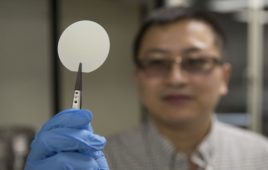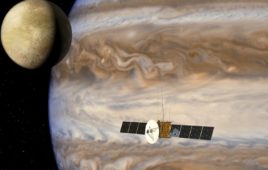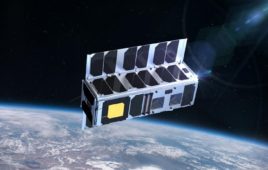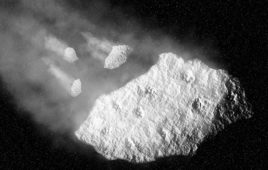Environmental Defense Fund (EDF), a U.S.-based nonprofit environmental advocacy group, intends to launch a new satellite designed to measure methane emissions worldwide. The spacecraft, named MethaneSAT, could offer a substantial help for countries and companies in combating global warming. MethaneSAT project was unveiled by EDF President Fred Krupp on April 11, 2018. He presented the plan…
Gallium Nitride Processor – Next-Generation Technology For Space Exploration
A material known as gallium nitride (GaN), poised to become the next semiconductor for power electronics, could be also essential for various space applications. Yuji Zhao, an expert in electrical and computer engineering at Arizona State University (ASU), plans to develop the first-ever processor from gallium nitride, which could revolutionize future space exploration missions. Gallium…
In The Footsteps of SpaceX—A Chinese Company Eyes Development of a Reusable Launch Vehicle
A Chinese startups appears to be following in the footsteps of SpaceX as it has lately laid out its own project of reusable space launch system. Link Space, the country’s first private rocket company, has recently presented the design of its New Line 1 (Xin Gan Xian 1) launch vehicle, which could compete with SpaceX’s…
In The Footsteps Of SpaceX – A Chinese Company Eyes Development Of A Reusable Launch Vehicle
A Chinese startups appears to be following in the footsteps of SpaceX as it has lately laid out its own project of reusable space launch system. Link Space, the country’s first private rocket company, has recently presented the design of its New Line 1 (Xin Gan Xian 1) launch vehicle, which could compete with SpaceX’s…
NanoRacks CEO Discusses Trends In Commercial Space Hardware
Founded in 2009, the Houston, Texas-based company NanoRacks LLC provides commercial hardware and services onboard the International Space Station (ISS) for government and commercial customers. To date, the firm has sent more than 550 payloads from over 30 countries to ISS, creating trends in commercial hardware in space. In an interview with Astrowatch.net, Jeffrey Manber,…
ESA’s JUICE Spacecraft Could Detect Water From Plumes Erupting On Europa
ESA’s JUpiter ICy moons Explorer (JUICE) mission to the Jovian system could easily confirm the presence of water on Europa, a new study finds. According to the research, it is feasible to detect water molecules (H2O) and water ions (H2O+) from the moon’s plumes during a flyby mission. The suspected water vapor plumes erupting on Jupiter’s moon…
Estonian CubeSat To Test New Technologies For Future Moon-Orbiting Satellite
Estonia plans to launch a CubeSat into space in early 2019 aiming to test advanced technologies, including a plasma brake for deorbiting satellites and electric sail propulsion. The mission, named ESTCube-2, will serve as a prototype of Estonia’s future moon-orbiting spacecraft. ESTCube-2 is a three-unit CubeSat developed mostly by the students of the University of…
Proposed CubeSat Mission to Study Atmospheric Processes On Venus
A small CubeSat designed to investigate atmospheric processes on Venus has been recently chosen by NASA for further development. The spacecraft, known as the CubeSat UV Experiment (CUVE), is one of 10 missions to study solar system planets and asteroids, selected by the agency under the Planetary Science Deep Space SmallSat Studies (PSDS3) program. CUVE…
Slowing Down an Interstellar Spacecraft at Alpha Centauri
While one of the most important challenges for future interstellar travel is to how send a probe to another stellar system relatively quickly, another issue that needs to be resolved is how to successfully slow down such a spacecraft once it gets there. Recently, two German researchers have proposed a solution addressing this problem, presenting…
NASA Develops AI for Future Exploration of Extraterrestrial Subsurface Oceans
NASA is developing technology that could enable autonomous navigation of future underwater drones studying subsurface oceans on icy moons like Jupiter’s Europa. The agency is working on artificial intelligence (AI) that would allow submersibles to make their own decisions during exploration of extraterrestrial water worlds. Space exploration missions and astronomical observations in recent years have…
PANIC Lander To Revolutionize Asteroid Research
A US-German team of researchers has proposed developing a micro-scale, low-cost surface lander for the in situ characterization of an asteroid. The tiny spacecraft, called the Pico Autonomous Near-Earth Asteroid In Situ Characterizer (PANIC), could be a breakthrough for the scientific community, offering a simple, cheap solution for asteroid research. The concept of the PANIC…









